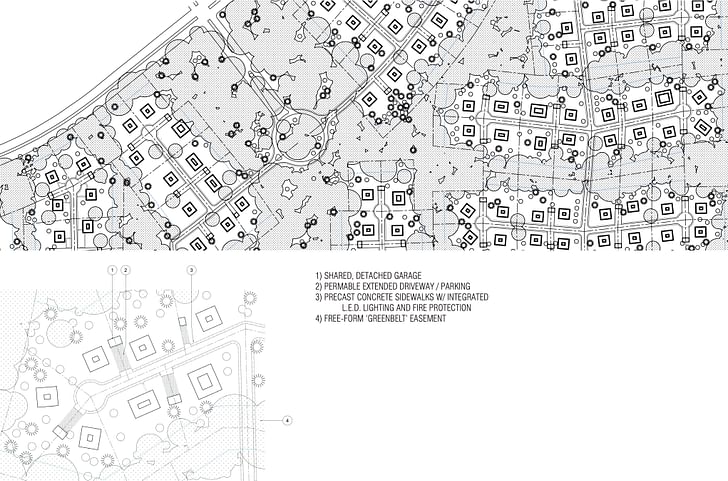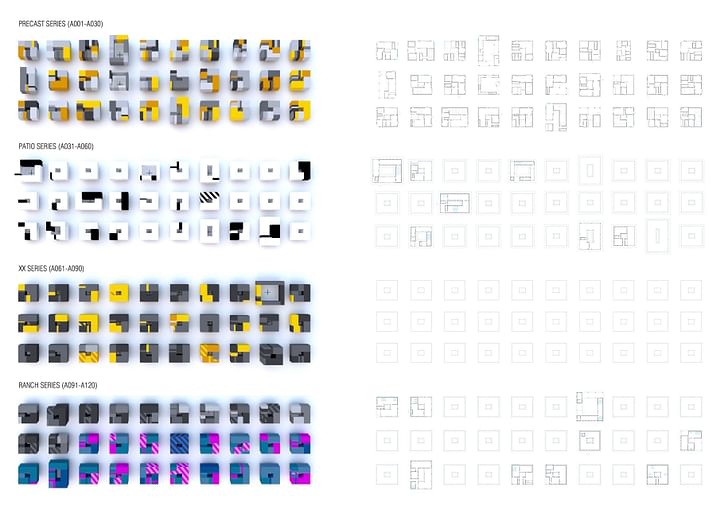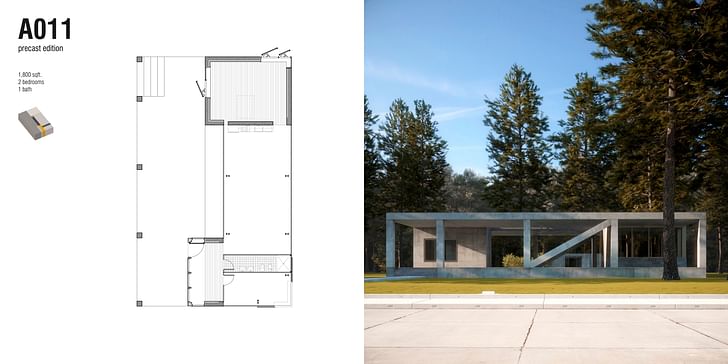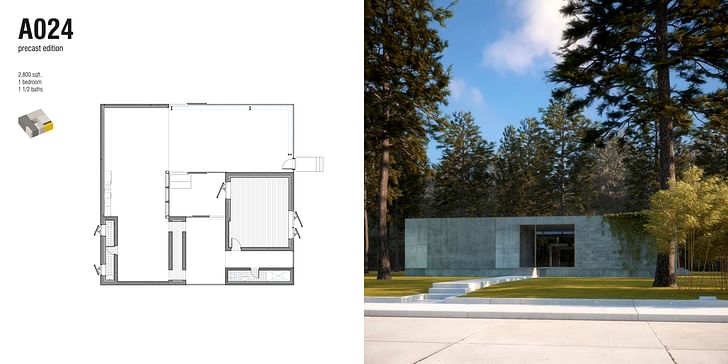

“Little boxes on the hillside, little boxes all the same,” Malvina Reynolds sang in 1962, forty-three years before her verses served as the theme music for the TV show Weeds. The song still resonates because, despite formal changes, suburban developments have, for some, represented monotony and homogeneity since they were first constructed in the late 1920s. But who said that mass-produced housing has to be boring?
Mass-Market Alternatives, a project by John Szot, explores alternative forms for suburban development that “dissolve the reputation of the suburbs as enclaves of conservatism and political conformity”. Maintaining a focus on the economic incentives that drives suburban developments in the first place,dissolve the reputation of the suburbs as enclaves of conservatism and political conformity Szot proposes a series of planning strategies, alongside an algorithmic design process, to shake up the suburbs. After all, “it stands to reason that just a few of these developments might deviate from the established aesthetic recipe to reach a more discerning market (or simply an aberrational one) that might be small by comparison, but not necessarily any less profitable,” Szot notes.


In the proposal, each home sits on an acre of land, allowing for more generous windows while still maintaining a sense of privacy. Simultaneously, the greater plot size responds to “the implicit desire for rural living present in the branding of these communities”. The back of each house would have an un-manicured lawn intended to allow resident children to play under “semi-controlled” circumstances.
But more space means more driving, and so generous parking is provided, although it's shared between neighbors to foster a sense of community. Garages are set back to reinforce the primacy of the home and its curb appeal. They’re also detached from the home, allowing all façades to let in natural light.Some conform nicely to conventional use, others possess an idiosyncrasy that pushes the boundaries of domesticity in subtle, subversive ways
Perhaps the most interesting aspect of Mass-Market Alternatives is the design process driving it. An algorithm is employed to generate a variety of different typologies, each using a limited palette of materials. The results are a series of courtyard homes. “In each pattern within a series, a color represents a single room with a specific wall configuration (solid walls vs. windows) and make up,” writes Szot. “The varying size of each colored bit translates to the deployment of the wall type it represents. Program is assigned after the fact, based on room size, location, and its relationship to other rooms.”
“Some conform nicely to conventional use,” he continues, “others possess an idiosyncrasy that pushes the boundaries of domesticity in subtle, subversive ways.”




Check out more of Szot's model homes in the image gallery below.
Writer and fake architect, among other feints. Principal at Adjustments Agency. Co-founder of Encyclopedia Inc. Get in touch: nicholas@archinect.com
4 Comments
How really does this differ from the Houses at Sagaponac? Yes, the variety in design by a range of architects is supplanted by the variety produced an algorithm, creating some efficiencies. But I'd argue that the idiosyncrasies of the individual architect and how the approach the problem of dwelling creates more variety than a single algorithm that creates variations on a based single idea of dwelling. Furthermore, the images demonstrate that the resulting configurations are only an aesthetic variation on the suburban dwelling, suggesting that they are a variant on Eichler homes more than part of the Case Study lineage.
If you're really going to disrupt suburban housing, you start with the codes and interrogate denisity and follow up with asking who the dwelling is intended for, and how it generates equity for the owner/occupiers.
This is amazing. Let's get computer driven designs to make architecture interesting when we could use humans taught to design interesting architecture. Next we'll be asking programmers to figure out how to get houses built in flood plains not to flood.
These houses are more boring than any suburban sub-division I have ever seen.
Flowers are composed of various variants which are ideal for gifting and during Xmas the flowers are sent with a beautiful packaging technique. The flowers are sent to the receivers and this main objective is to make them happy and so, during this season people Send Xmas Flowers to Italy.
http://www.flowers4italy.com/Christmas-Flowers-Italy.asp
Block this user
Are you sure you want to block this user and hide all related comments throughout the site?
Archinect
This is your first comment on Archinect. Your comment will be visible once approved.